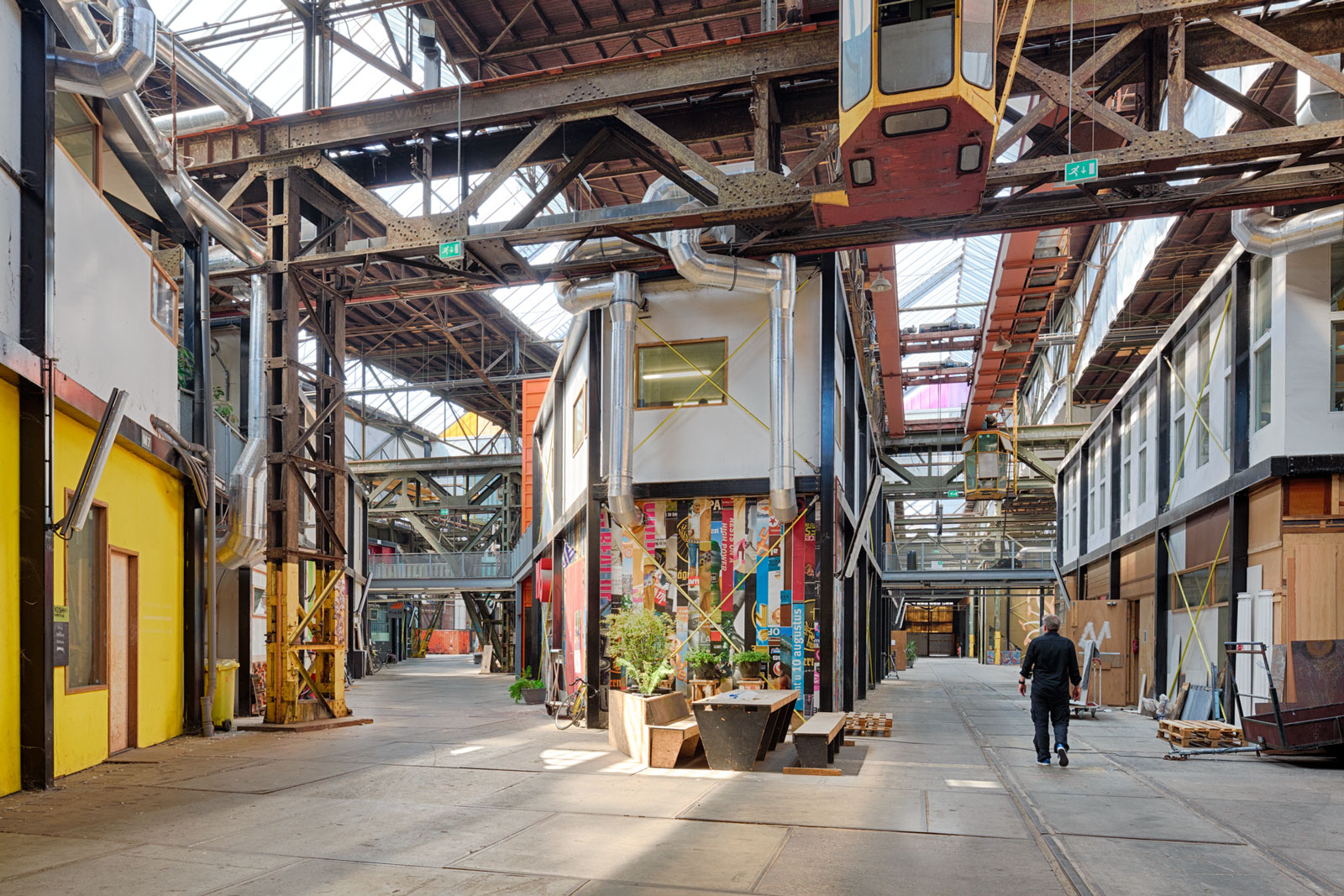-
NDSM

Wharf
A collective creative community
Amsterdam, 1999 – present
“Kunststad” (Art City): frameworks of steel and concrete plugged into the rugged industrial structure. (Photo: Ronald Tilleman)
-
The NDSM [Netherlands Dock and Shipbuilding Company] Wharf in Amsterdam North went bankrupt in 1984. Since the 1990s, a collective of artists, craftsman and skaters called Kinetisch Noord, have collaborated to decontaminate, license, fund, design, and build spaces within it that now include dance companies, schools, a skate park, NGOs, and assorted ateliers.
NDSM’s new community emerged out of a number of protests and evictions from a series of previous warehouse transformation projects, enabling the inhabitants to draw on the experience and knowledge of numerous successful – and failed – models of collective building communities. This gave them the wherewithal to fundraise for and thus majority self-finance the project, meaning that the co-users are providing around 20 million euros or 66 percent of the total cost. The resulting Kunststad, or “Art City”, now stands under the massive roof of the 20,000 square metre former NDSM building. Its layout was conceived by the collective, but it took time for the group to find an architect willing to accept their design and merely provide the construction drawings for the raw steel frame. In the end, each user constructed their own space within the framework. This built reality traces back to the theoretical origins of the group, which believes in the notion of “the city as a framework”. The need for people and businesses to be afforded an incubation period is key to the logic, success, and future of NDSM.
The intermingling layers of the local and international are ever present on the site. This locally-based, self-organised project inhabits an earlier casualty of a globalised economy. Stepping outside this warehouse, the surrounding area of 32 hectares is government controlled, dominated by vacant lots that the city hopes international tenants will eventually fill. Simultaneously, small and medium sized Amsterdam-based businesses, who could fill those vacant lots, struggle to find affordable spaces within the city. The NDSM wharf closed in 1984 largely due to the dominance of the Osaka shipyard in Japan. Soon after, in 1986 the Osaka shipyard itself foundered. Now these and other abandoned shipyards are the crucibles for a global community, which shares experience of locally based best practice for the redevelopment of such industrial sites. p (Jason Hilgefort)
-
Search
-
FIND PRODUCTS
PRODUCT GROUP
- Building Materials
- Building Panels
- Building technology
- Façade
- Fittings
- Heating, Cooling, Ventilation
- Interior
- Roof
- Sanitary facilities
MANUFACTURER
- 3A Composites
- Alape
- Armstrong
- Caparol
- Eternit
- FSB
- Gira
- Hagemeister
- JUNG
- Kaldewei
- Lamberts
- Leicht
- Solarlux
- Steininger Designers
- Stiebel Eltron
- Velux
- Warema
- Wilkhahn
-
Follow Us
Tumblr
New and existing Tumblr users can connect with uncube and share our visual diary.
»What the map cuts up, the story cuts across.«
Michel de Certeau: Spatial Stories
Keyboard Shortcuts
- Supermenu
- Skip Articles
- Turn Pages
- Contents


